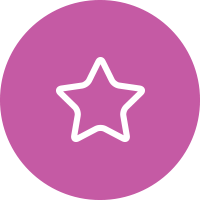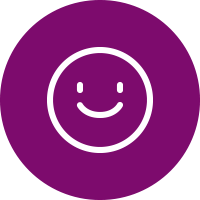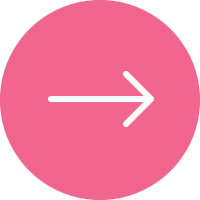
At home reading
information
Word Study Practice Ideas
Useful Links
Curriculum Overview
Math
The Common Core aligned math curriculum that Pembroke Schools adopted in 2013 is called Go Math. The first grade curriculum is divided into 4 units which correlate with the 4 strands of mathematics - Operations & Algebraic Thinking, Number & Operations in Base Ten, Measurement & Data, and Geometry. Each unit consists of daily lessons within chapters that support student growth and understanding of these critical areas of math knowledge.
Literacy
*Word Study (Formerly known as Spelling)
Word study is not memorization of weekly spelling words. Word study provides students with opportunities to investigate and understand the patterns in words. Knowledge of these patterns means that students don't need to learn to spell one word at a time.
Word study is designed to build word knowledge that can be applied to both reading and spelling (Henderson, 1992; Zutell, 1998). Because it is closely tied to reading instruction, it also develops students' abilities in phonics, word recognition, and vocabulary (Baker, 2000).
3 Layers of word study
· Alphabet – learning the relationship between letters and sounds
· Pattern – learning specific groupings of letters and their sounds
· Meaning – learning the meaning of groups of letters such as prefixes, suffixes, and roots. Vocabulary increases at this layer.
Important Word Study Concepts
Word Sorts – organizing words into groups based on similarities in their patterns or meaning.
Rule Breakers – words that cannot be grouped into any of the identified categories of a sort. Students should be taught that there are always words that “break the rules” and do not follow the general pattern. (Many of our High Frequency Words are “rule breakers”.)
Sound marks / / - Sound marks around a letter or pattern tell the student to focus only on the sound rather than the actual letters. (example: the word gem could be grouped into the /j/ category because it sounds like j at the beginning).
Vowel– one of 6 letters causing the mouth to open when vocalized (a, e, i, o, u, and often y). A single vowel sound is heard in every syllable of a word.
Consonants– all letters other than the vowels. Consonant sounds are blocked by the lips, tongue, or teeth during articulation.
~Initial and final consonants – students are instructed to look at pictures or listen to words and identify the beginning sound. They then connect the beginning sound to the letter that makes that sound. Students then listen for the ending sound and match the sound to the ending letter.
Word Families –Words are in the same “family” if they have the same vowel and ending letters. Example of words in the same family – cat, bat, fat, sat. (In these words there are two letters and two sounds that make a word chunk or ending rime- /a/ & /t/ make the rime -at.
*Reading
In first grade, teachers use Guided Reading for in-class reading instruction. Students receive small group and one to one instruction based on their individual reading levels. A formal assessment of a student's word knowledge, comprehension, and fluency through reading of leveled books provides information to guide instruction at his/her guided reading level.
Teachers work with each student to help them become more effective readers by introducing them to new skills and strategies in increasingly challenging books. Students practice reading familiar collections of books at their independent and guided reading levels every day to build fluency and confidence.
There are many areas of reading instruction that are focused on during guided reading lessons, including:
-
Genre (type of book)
-
Text Structure (organization & presentation of the subject )
-
Content (subject of the book)
-
Themes and Ideas (author's ideas)
-
Language and Literary Features (types of writing techniques)
-
Sentence Complexity (format and structure of sentences)
-
Vocabulary (new words that support understanding)
-
Words (decoding unfamiliar & recognizing familiar words)
-
Illustrations (using details in illustrations, photographs, & diagrams to support understanding)
-
Book/Print Features (physical characteristics of the book)
*Writing
Students in first grade will be participating in Writer's Workshop. We follow a program created by Lucy Caulkins at Teachers College that encourages students to "write what you know about" in different genres of writing: Narrative Writing, Information Writing, andOpinion Writing.
A writer's workshop model begins with a whole class lesson led by the teacher. The lesson may include looking at authentic examples of writing (children's books, teacher writing, peer writing) or a shared class writing activity. New writing skills are introduced during this lesson. Following the lesson, students are encouraged to write independently. The teacher is available for guidance and support throughout the writing session. Students are encouraged to draft, edit, and revise their writing pieces. Writer's workshop sessions often end with an opportunity for students to share what they have been working on with others.
*Science
First grade students will be taught to observe, ask questions and record observations & answers. Science lessons often overlap other areas of the curriculum including reading, writing, and math. First graders learn about the tools, processes and procedures needed for scientific inquiry and recording. Graphs, pictures, and words are all important recording strategies for a first grader.
The first grade science curriculum includes:
Earth Science- weather, Earth's properties, sun & moon
Physical Science- matter, force & motion, energy
Life Science- NH habitats, life cycles, classification (living vs. non-living)
*Social Studies
First graders begin to learn about their communities and the world around them in more detail through read-alouds, independent reading, research, projects, guest speakers, and exploratory trips.





